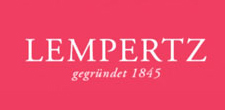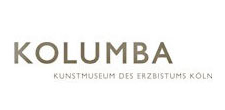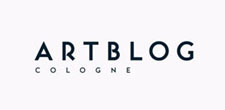EDITORIAL # 27
BEATRIX RUF / STEDELIJK MUSEUM AMSTERDAM
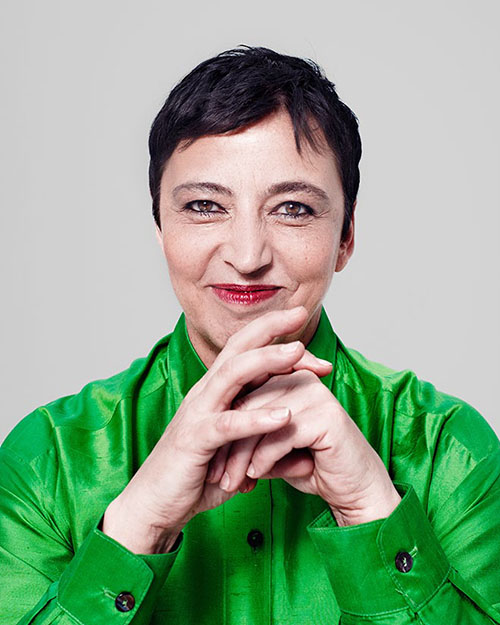
Beatrix Ruf (*1960 in Singen) Werdegang in der internationalen Kunstwelt ist bemerkenswert und facettenreich. Ruf studierte zunächst Psychologie, Ethnologie sowie Kunst- und Kulturwissenschaften an der Züricher Universität und am Wiener Konservatorium. Anschließend arbeitete sie als Freelancekuratorin, Choreographin und Kritikerin. In den Jahren 1998-2001 arbeitete sie als Kuratorin im Kunstmuseum Thurgau und als Direktorin des Kunsthaus Glarus. 2001 wurde sie als Direktorin an die Kunsthalle Zürich berufen und betreute den umfassenden Erweiterungsbau der Kunsthalle, der 2012 abgeschlossen wurde. Sie entwickelte ein international anerkanntes Ausstellungsprogramm, welches Einzel- und Gruppenausstellungen umfasste. Wilhelm Sasnal, Keren Cytter, Trisha Donnelly, Wade Guyton und Seth Price zählen zu den jungen Künstlern, die hier zum ersten Mal im Museum ausstellten.
Zusätzlich zu ihrem Direktorenposten in Zürich war Ruf beteiligt an zahlreichen namhaften internationalen Biennalen und Triennalen. Seit November 2004 ist Beatrix Ruf die gewählte Direktorin des Stedelijk Museum Amsterdam.
Cahier: Welche Rolle spielen für Sie Tradition und Ausstellungsgeschichte des Stedelijk Museums?
Beatrix Ruf: Für mich ist es natürlich besonders aufregend, gerade mit diesem Museum arbeiten zu können. Nicht nur, weil das Stedelijk Museum eine einzigartige Sammlung an Kunst und Design hat und es in der Tradition der frühen Moderne sowie dem Dialog der Disziplinen steht, sondern auch aufgrund der unglaublichen Ausstellungsgeschichte des Hauses. Das Stedelijk Museum hat immer eine enge Beziehung mit Künstlerinnen und Künstlern geführt und hat auch die institutionelle Identität, die institutionellen Bedingungen des Museums immer wieder an die Setzungen und an die Bedürfnisse der Künstlerinnen und Künstler angepasst. Für mich ist das Stedelijk Museum der ideale Schritt von der Arbeit mit einer Kunsthalle in ein Museum und ein Glücksfall. Die Art und Weise, wie dieses Museum mit Künstlerinnen und Künstlern arbeiten kann, beinhaltet Qualitäten, die die Arbeit in Kunsthallen auszeichnet – das betrifft vor allem die Bereitschaft, die Institution selbst einer Flexibilität auszusetzen, um Ideen und Experimente der Künstler zu realisieren. Das Stedelijk Museum ist nicht sowohl eine Kunsthalle als auch ein Museum, sondern das Stedelijk Museum ist, denke ich, eines der wenigen Museen, denen es gelungen ist, diese historische Aufteilung von Institutionen aufzuheben. Kunsthallen sind ja Ende des 19. Jahrhunderts auch deshalb entstanden, weil Museen zeitgenössische Vorgehensweisen von Kunst nicht integrieren konnten. Ich glaube, dass in den mehr als hundert Jahren, in denen diese parallelen institutionellen Modelle bestehen, Kunsthallen ein spezifisches Arbeiten mit den Künstlerinnen und Künstlern herausgearbeitet haben, und ich denke, dass das Stedelijk Museum dies seit Willem Sandberg wirklich voll in seiner DNA integriert hat.
Diese DNA betrifft aber auch den Umgang mit der eigenen Geschichte und die Art und Weise, wie diese öffentlich und transparent gemacht wird: Gerade im Moment ist eine in langen Jahren recherchierte Ausstellung zum Stedelijk im Zweiten Weltkrieg (The Stedelijk Museum & The Second World War) zu sehen. Das Stedelijk ist das erste Museum, das die im Zuge der Restitutionsaufarbeitung der holländischen Museen aufgearbeitete eigene und sehr spezielle Geschichte in einer Ausstellung zugänglich macht. Willem Sandberg hat vorausahnend vor dem Ausbruch des Zweiten Weltkriegs, als die Ausstellung zur ‘entarteten Kunst’ statt fand und sich abzeichnete, dass es ein großes Problem geben würde, nicht nur Ausstellungen zur abstrakten Kunst initiiert, sondern auch einen Bunker für die Kunst gesichert, in dem die Sammlung des Stedelijk Museums und auch zahlreiche andere private und institutionelle Kunstwerke gelagert werden konnten. Darunter waren auch wichtige Werke wie Die Nachtwache (Rembrandt) aus dem Rijksmuseum und Sammlungen von jüdischen Immigranten und holländischen Sammlern, die im Bunker zum Schutz von Personen und Werken oft ohne Inventarlisten aufgenommen wurden. Die Ausstellung zeigt die Recherchen im Zusammenhang mit der Ausstellungsgeschichte des Stedelijk im und nach dem Krieg, als es umgehend eine Wiederaufnahme der Moderne ins Ausstellungsprogramm unternommen hat und von da an wichtige Setzungen in der Selbstreflexion als Institut für zeitgenössische und moderne Kunst gemacht hat. Dies war auch der Zeitpunkt, als das Stedelijk Museum radikal zeitgenössisch wurde. So ist diese Ausstellung auf vielen Ebenen für mich sehr wichtig, weil sich hier die DNA des Museums formuliert hat und weil sie einen zeitgenössischen Umgang mit der Recherche nach der eigenen Geschichte öffentlich macht.
Die Stedelijk-DNA zieht sich in der historischen Nachfolge dieser Zeit durch die legendären Ausstellungen, die Präsenz von Künstlerinnen und Künstlern, und Ausstellungsmodellen: Gilbert und George haben ihre erste Performance auf der legendären Treppe des Stedelijk gemacht, 1969 fand die von Wim Beeren kuratierte Ausstellung „Op Losse Schroeven: Situaties and Cryptostructuren mit Künstlern wie Joseph Beuys, Jan Dibbets, Ger van Elk, Douglas Huebler, Joseph Kosuth, Jannis Kounellis, Richard Long, Mario Merz, Robert Morris, Bruce Nauman, Dennis Oppenheim, Robert Rymanand und Lawrence Weiner statt – eine fast identische Künstlerliste wie in der eine Woche später eröffneten Ausstellung von Harald Szeemann „Live in Your Head – When Attitudes Become Form“ in Amsterdam.
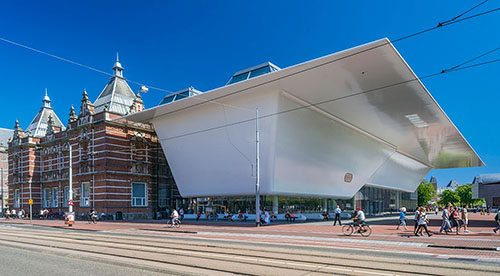
Stedelijk Museum view of the original building (A.W. Weissman, 1895) and new building designed by Benthem Crouwel Architects. Photo: John Lewis Marshall
Die enge Zusammenarbeit mit Künstlerinnen und Künstlern schreibt sich auch in der Sammlungsgeschichte dieser Institution nieder. Ich hoffe, es gelingt uns, an diese Qualität und Radikalität sowohl des Ausstellungsmachens wie des Sammelns anzuknüpfen und dies weiter zu führen. Das Stedelijk kommt ja gerade aus einer etwas problematischen Baugeschichte. Das Museum war lange gezwungen in temporären, einige Jahre sogar ganz ohne Räume zu arbeiten, bis es 2012 hier in den renovierten und erweiterten Bau wieder einziehen konnte. Seit zwei Jahren ist das Stedelijk nun wieder ganz „hier“, und ich finde es wunderbar zu sehen, wie die DNA dieser Institution vorhanden und leicht zu entflammen ist. Am 1. November 2014 habe ich mit meinem Team die Arbeit offiziell aufgenommen und bereits Ende November haben wir eine Projektion auf die Außenfassade des Neubaus realisieren können. Am 1. Januar 2015 hat eine große Übersichtsausstellung zum Werk von Tino Sehgal begonnen, die sich über ein ganzes Jahr erstreckt und die Präsenz von Live- Art als ebenbürtige Werke in einer Sammlungspräsentation behauptet. Tino Sehgal war am ersten Tag seiner Jahresausstellung selbst Performer. Ich finde es großartig, dass eine Institution sich auf ein Projekt so schnell, flexibel und engagiert einlassen kann; das Projekt wird die Institution ein ganzes Jahr lang permanent fordern. Jeden Monat werden andere Arbeiten in verschiedenen Räumen der permanenten Sammlung gezeigt. Das heißt, wir räumen bestehende Sammlungspräsentationen aus oder Tino Sehgal wählt neue Arbeiten für seine Situationen. Jeden Monat ist die gesamte Institution, vom Depot bis zum Personal am Empfang, involviert. Aufwendige Auditions mit Performern aus allen nur erdenklichen gesellschaftlichen Zusammenhängen finden statt, und Tino Sehgal fordert das Museum zu alltäglicher Bewegung.
Ein weiteres Projekt, das wir Anfang dieses Jahres in enger Zusammenarbeit mit einem jungen Künstler bereits realisierten, ist die großformatige Einzelausstellung von Ed Atkins. Wir haben ihm den neuen größten Ausstellungsraum im Neubau des Museums gegeben, und er wird Ende April noch ein zweitägiges performatives Symposium realisieren. Ende März sind dann mit Sehgal, Atkins, Stedelijk im 2. Weltkrieg und der Ausstellung „Die Oase von Matisse“ vier Ausstellungen parallel und große Teile einer Sammlungsneuhängung zu sehen. Die Matisse Ausstellung experimentiert mit einer anderen Fassung von historischen monographischen Ausstellungen, sie liest die Sammlung des Stedelijk Museums neu, ausgehend vom wichtigen Cut-Out „La perruche et la sirène“ (1952-53) mit über 100 Matisse Leihgaben von der Tate, dem MoMA und 35 weiteren Institutionen. In der zweiten Hälfte des Jahres wird eine Zero Ausstellung zu sehen sein, die auf einer gemeinsamen Recherche zu dieser Kunstbewegung mit dem Guggenheim Museum und der Zero Foundation in Düsseldorf basiert, im Dezember zeigen wir in einer umfassenden Ausstellung Seth Siegelaubs weit gefächertes Schaffen. Im Sommer realisieren wir in Zusammenarbeit mit dem Holland Festival ein Park-Projekt mit Liam Gillick, das den gesamten Museumspark bespielt, der das Stedelijk Museum, das Van Gogh Museum und das Rijksmuseum verbindet. Liam Gillick hat mit dieser für ihn größten Außenarbeit eine interaktive Skulptur geschaffen, die das Publikum in Anlehnung an die frühen Jahrmarktsfotografien zu Selfies vor den Museen einlädt. Zudem arbeiten wir noch an Ausstellungsprojekten, die aus der Sammlung heraus entstehen und an einem weiteren großen Wunschprojekt, das wir bald publizieren können.
Worauf wir einen speziellen Schwerpunkt legen wollen, ist, wie man das eigene Tun, die Recherchen, das Ausstellen und das Sammeln als Frage des Zeitgenössischen realisiert. Ich denke, insbesondere dies findet sich in der DNA des Stedelijk Museums. Das heißt dann auch, bei einer Ausstellung zu Matisse zu fragen: Was für ein Ausstellungsformat, welches Ausstellungsmodell wollen wir wirklich? Was tut diese Ausstellung im Kontext der bereits realisierten Ausstellungen zu diesem Künstler, zu diesem Werk – und damit auch für unser Publikum? Ich glaube, dass sowohl die monographischen Projekte mit Tino Sehgal und Ed Atkins, wie die auf Recherche basierten Ausstellungen zu Matisse, Zero, Siegelaub nicht nur die künstlerischen Positionen vertiefend zeigen, sondern auch die Ausstellung als aussagekräftiges Format – etwas, das diese Institution immer getestet und formuliert hat.
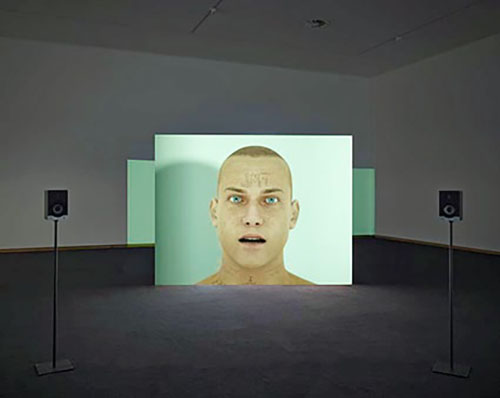
Ed Atkins, Ribbons (still), 2014, collection Stedelijk Museum Amsterdam. Photo: Gert Jan van Rooij
Cahier: Die Sammlung ist also nicht nur ein sehr wichtiges Fundament, sondern auch immer wieder Ausgangspunkt?
Beatrix Ruf: Die Stedelijk Sammlung ist hervorragend und weltweit geschätzt, das ermöglicht uns nicht nur diese qualitätvolle Sammlung im Stedelijk selbst in vielen Variationen zu zeigen, sondern auch international ein interessanter Partner für die großen Häuser zu sein, wie die Matisse Ausstellung nun gerade zeigt. Für die Sammlungspräsentation haben wir gerade ein großes Projekt vor uns im nächsten Jahr, wo wir die gesamte Sammlung umhängen und eine Revision machen, wie wir mit den Räumen umgehen und nach zwei, knapp drei Jahren schauen, ob es funktioniert, wie die Besucherflüsse sind. Im großen Ausstellungsraum des Neubaus, wo jetzt die Ed Atkins Ausstellung stattfindet, wollen wir auf mehr als 2.000 Quadratmetern permanente Sammlungsinstallationen im dialogischen Verhältnis von Design- und Kunstsammlung und diese in langsamen Wechseln variieren, im Erdgeschoss wollen wir auch Sammlung zeigen, aber mit häufigeren Bewegungen, die, ausgehend von der permanenten Recherche, aus der Sammlung heraus spezifische Projekte generiert und einen Fokus absteckt. Im Obergeschoss finden in Zukunft dann die Wechselausstellungen statt.
Cahier: Sie arbeiten mit einem Team von Kuratoren zusammen. Wie ist es zu der Wahl des neuen Chefkurators Bart van der Heide gekommen, und wie strukturiert sich die Zusammenarbeit?
Beatrix Ruf: Ich bin sehr froh, dass wir Bart van der Heide gewinnen konnten, und zum Glück konnte er bereits im Februar im Stedelijk Museum beginnen. Bart van der Heide hat bereits im Stedelijk als junger Kurator gearbeitet und dann in London und München internationale Erfahrung gesammelt – und natürlich ist er Holländer und kann so lokale und internationale Sichten verbinden. Vor allem seine Arbeit als Direktor am Kunstverein München habe ich intensiv verfolgt, und ich war sowohl von Barts künstlerischen Entscheidungen wie auch von seinem Umgang mit diversen Publikumsschichten, Peergruppen und kulturellen Produzenten beeindruckt, die er in die Tätigkeit des Kunstvereins aktiv mit einbezogen hat. Wir arbeiten eng zusammen – und arbeiten an der Integration anderer Formen der kuratorischen Kollaboration im gesamten Kuratorenteam des Stedelijk. Das Stedelijk Museum war immer eine direktorgetriebene Institution – und es gefällt mir natürlich besonders, dass es eines der wenigen Museen ist, an dem Ausstellungen des Direktors geradezu erwartet werden. Wir wollen aber andere Formate genauso stark kultivieren. Das große gemeinsame Projekt für die Neuhängung der Sammlung ist auch ein Projekt, um über Kollaborationen und kollektives Kuratieren im Team nachzudenken und dieses auszutesten.
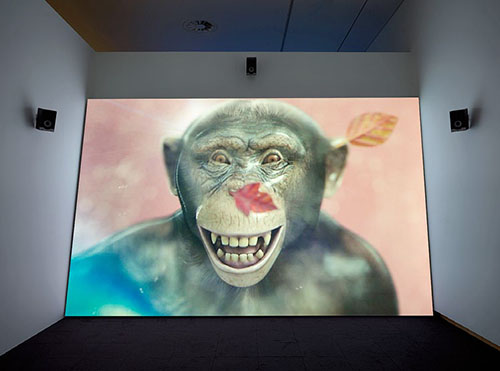
Ed Atkins, Even Pricks (still)s, 2013, Photo: Gert Jan van Rooij
Cahier: Das Stedelijk Museum hat traditionell eine starke Anbindung und Verbundenheit mit der Stadt Amsterdam.
Beatrix Ruf: Das Stedelijk Museum genießt eine emotionale Verbundenheit mit der Stadt, die man mit keinem Marketing kaufen kann. Ich finde das sehr beeindruckend und auch berührend, wie stark dieses Museum in der kollektiven Biographie der Amsterdamer, aber auch des gesamten Landes verankert ist – das Museum gehört allen, eine große Chance und ein unglaubliches Potenzial für eine Institution. Und es gibt hier eine tief verwurzelte Tradition, dass Eltern mit ihren Kindern in das Museum gehen, früh die Bindung an die Kunst und die Auseinandersetzung mit der Kunst pflegen. Das ist ein unglaublicher Schatz. Wir erfahren deshalb auch, dass das Stedelijk eine „lost generation“ zu überbrücken hat, die diese Erfahrung während des Baus nicht machen konnte. Wir versuchen diese Bindung ans Museum nun nach den langen Jahren der Abwesenheit des Museums wieder ins Zentrum zu rücken, und die Künstler helfen uns sehr damit: Tino Sehgal hat einen Text geschrieben, der mit 365 Worten für jeden Tag seiner Ausstellung im Stedelijk eine wunderbare Aktion ermöglicht. Wenn man Mitglied des Stedelijk dieses Jahr wird, erhält man ein oder mehrere Worte und engagiert sich so nicht nur fürs Museum, sondern wird Teil der Arbeit.
A Year at the Stedelijk : Tino Sehgal, 01.01. – 31.12.15
Ed Atkins Recent Ouija, bis/ through 31.05.15
The Stedelijk Museum & The Second World War, bis/ through 31.05.15
Matisse The Oasis of Matisse, bis/ through 16.08.15
All-intimate-act Liam Gillick on Amsterdam´s Museumsplein, 30.05. – 23.06.15
Zero: Let Us Explore The Stars, 04.07. – 08.11.15
Beatrix Ruf (Singen, Germany, 1960) has a rich and diverse career in the international art world. After completing studies in Psychology, Ethnology and Art and Cultural Sciences at the University of Zürich followed by studying at the Conservatory of Vienna, Ruf worked as a freelance curator, choreographer and critic. She served as Curator at Kunstmuseum Thurgau, Warth from 1994-1998, and was Director of Kunsthaus Glarus, Glarus from 1998-2001. In 2001, Beatrix Ruf was appointed Director of Kunsthalle Zürich, overseeing a substantial expansion project launched in 2003 and concluded in 2012. She developed an internationally renowned exhibition program of solo presentations and group exhibitions. Wilhelm Sasnal, Keren Cytter, Trisha Donnelly, Wade Guyton and Seth Price were among the young artists to receive their first museum presentation there. In addition to her directorship in Zürich, Ruf has also been involved with numerous prestigious international biennials and triennials. Since November 2014 Beatrix Ruf is the appointed artistic director of the Stedelijk Museum Amsterdam.
Cahier: What do the Stedelijk Museum’s tradition and history of exhibition making mean to you?
Beatrix Ruf: Of course, it’s especially exciting for me to be able to work with this museum. Not just because the Stedelijk Museum has a unique collection of art and design, or because it stands in the tradition of early modernism and the dialogue between these two fields, but also because of the museum’s incredible exhibition history. The Stedelijk Museum has always maintained a close relationship to the artists and has consistently adjusted the institution’s identity, the institution’s conditions, to meet the needs and standards of the artists. For me, the Stedelijk Museum is an ideal transition from working with a kunsthalle to working with a museum and, of course, a lucky break. The way this museum works with artists has some of the qualities that usually distinguish a kunsthalle – especially concerning its readiness to subject the institution to a certain degree of flexibility in realising the ideas and experiments of artists. The Stedelijk Museum isn’t simultaneously a kunsthalle and a museum, rather it’s one of the few institutions, I think, that has managed to overcome this historical separation. Kunsthallen developed at the end of the 19th century largely because museums couldn’t integrate more contemporary approaches to art.
These two parallel institutional models have existed for more than a century now, and I think, in that period, kunsthallen have developed a specific way of working with artists, but, since Willem Sandberg, the Stedelijk Museum has really fully integrated this into its DNA.
This DNA also underlies the museum’s approach to its own history and the way it’s made public and accessible. There’s currently an exhibition on view about the Stedelijk during the Second World War (The Stedelijk Museum and the Second World War) that they’ve been researching for years. The Stedelijk is the first Dutch museum that, in the course of its restitution work, has made its own unique history accessible in the form of an exhibition. When the Entartete Kunst exhibition took place, before the outbreak of the Second World War, Willem Sandberg saw a large problem looming ahead – he not only initiated exhibitions of abstract art, but also secured a bunker in which the Stedelijk’s collection and numerous other private and institutional artworks could be stored. These included Rebrandt’s The Night Watch from the Rijksmuseum as well as collections by Jewish immigrants and Dutch collectors, which were often stored without an inventory in order to protect both persons and works. The exhibition presents this research in combination with the exhibition history of the Stedelijk during and after the war, as it undertook a reassessment of modernity in its exhibition program and, from then on, set important standards for the selfreflection of modern and contemporary art institutions. This was also the point in time when the Stedelijk Museum became radically contemporary. So this exhibition is important to me on a lot of levels because it articulates the museum’s DNA and publicly presents a contemporary approach to researching one’s own history.
The influence of this DNA carries on throughout the historical successors of that period, through the legendary exhibitions, the presence of artists and exhibition models. Gilbert and George did their first performance on the the Stedelijk’s legendary stairs. 1969 was marked by the exhibition Op Losse Schroeven: Situaties en Cryptostructuren in Amsterdam, curated by Wim Beeren, which included artists such as Joseph Beuys, Jan Dibbets, Ger van Elk, Douglad Huebler, Joseph Kosuth, Jannis Kounellis, Richard Long, Mario Merz, Robert Morris, Bruce Nauman, Dennis Oppenheim, Robert Ryman and Lawrence Weiner – an almost identical list of artists would feature in Harald Szeeman’s Live in Your Head – When Attitudes Become Form, which opened a week later.
Close collaboration with artists has also been inscribed in the history of this institution’s collection, and I hope we can manage to build on this quality and radicality in both exhibition making as well as collecting and carry them further.
The Stedelijk has just emerged from a somewhat problematic construction period. The museum had long been forced to temporarily – over several years in fact – operate without any rooms at all until it could move back into the renovated and expanded building in 2012. The Stedelijk has only really been ‘back’ for about two years, and I think it’s wonderful to see how the institution’s DNA is still in place and easily ignitable. On the 1st of November 2014, my team and I officially undertook a project to install a projection on the new building’s facade, and we were already able to realise it by the end of November. A large survey show of Tino Sehgal’s work began on the 1st of January 2015, but will run for an entire year, asserting that the presence of Live Art is just as important in the presentation of the collection. Tino Sehgal himself performed on the first day of his year long exhibition. I think it’s great that an institution can get involved in such a project with such speed, flexibility and engagement. The institution will constantly facilitate the project for an entire year. Each month, different works will be presented in the various rooms of the permanent collection. That means we’ll have to continually clear out the existing presentation or Tino Sehgal will choose new works for his situations. Each month, the whole institution, from the depot personnel to the service staff get involved in reception. There are elaborate auditions with performers from all conceivable social backgrounds and Tino Sehgal forces the museum into movement on a daily basis.
Another project that we’ve realised in close collaboration with a young artist at the beginning of the year was the large format solo show of Ed Atkins. We’ve given him the largest new exhibition spaces in the museum and he’ll realise a two day performative live forum at the end of April. At the end of March then, with Sehgal, Atkins, The Stedelijk Museum and the Second World War and the exhibition The Oasis of Matisse, there’ll be four exhibitions on view, not to mention large parts of the permanent collection’s new hanging. The Matisse exhibition experiments with a different approach to monographic historical exhibitions. It reconsiders the Stedelijk’s collection, taking the important cut-out La perruche et la sirène from 1952-53 as its main point of departure, but also involves an additional 100 Matisse works on loan from the Tate, the MoMA and 35 other institutions. In the second half of the year, there will be a Zero exhibition on view, based on collaborative research with the Guggenheim Museum and the Zero Foundation in Düsseldorf. In December, well be presenting a comprehensive exhibition of Seth Sieglaub’s wide-ranging work. In Summer we’ll also be realising, in collaboration with the Holland Festival, a park project by Liam Gillick, which will occupy the entire Museum Park that joins the Stedelijk, Van Gogh and Rijks museums together. For his largest outdoor work until now, Liam Gillick produced an interactive sculpture which draws on the tradition of early fair photography and invites the audience to take selfies in front of the museums. Additionally, we’re also working on some exhibition projects based on works in the collection as well as on another ambitious project that we’ll soon be able to make public. We want to put a special emphasis on how one can realise one’s own actions, the research, exhibiting and collecting, as a contemporary question. I think this is exactly to be found in the DNA of the Stedelijk Museum. That means asking what kind of exhibition format or model do we really want, even with the Matisse exhibition. What can this exhibition do within the context of all the previously realised exhibitions about this artist, about this work? What can it do for our public? I think both the monographic projects with Ed Atkins and Tino Sehgal as well as the research based exhibitions about Matisse, Zero and Sieglaub, don’t just show these artistic positions in depth. They also show the exhibition as a meaningful format – something that this institution has constantly tested and reformulated.
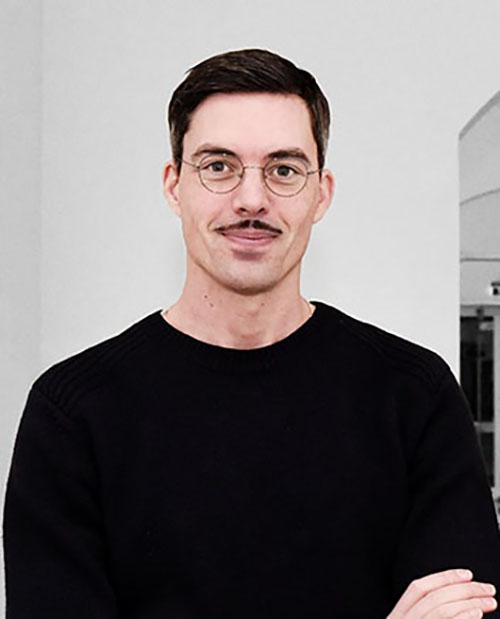
Bart van der Heide. Photo: Catharina Hess
Cahier: So the collection isn’t just an important foundation or canon, but also a recurring point of departure?
Beatrix Ruf: The Stedelijk collection is outstanding and appreciated worldwide. This allows us not only to show the distinctive collection in many variations within the Stedelijk itself, but also to be a valuable partner to large museums internationally, as the Matisse exhibition currently shows. We have a big project ahead of us for presenting the collection next year, where we’ll rehang the entire collection, overhaul our approach to the exhibition spaces and see if after two, almost three years, things work out with visitor traffic. In the large exhibition space, where the Ed Atkins show is currently on view, we want to do an over 2,000 square meter installation of the permanent collection, showing a discursive relationship between the art and design collections, slowly varying over time. We also want to show the collection on the ground floor, but with more frequent changes, which will be determined by specific projects that develop out of the ongoing research into the collection and will underline a specific focus. In future, the temporary exhibitions will be located on the top floor.
Cahier: You work together with a team of curators. How did you arrive at the choice of the new head curator, Bart van der Heide, and how is this collaboration structured?
Beatrix Ruf: I’m very happy that Bart van der Heide joined the Stedelijk and luckily, he already started working at the Stedelijk in February. Bart van der Heide already knows the Stedelijk from having worked here as a younger curator and, since then, has gathered international experience in London and Munich – and, of course, he’s a Dutchman, so he can combine both local and international perspectives. Above all, I’d followed his work as the director of the Kunstverein München and I was impressed both by his artistic decisions as well as the way he dealt with the diverse audiences, peer groups and cultural producers he actively brought in during his time at the Kunstverein. We work together closely – and we’re also working on integrating other forms of curatorial collaboration into the Stedelijk’s larger curatorial team. The Stedelijk Museum has always been a director-run institution – and of course I’m happy that it’s one of the few museums where people almost look forward to exhibitions by the director, but we also want to cultivate other formats just as strongly. The large collective project of rehanging the collection is an ideal project to experience and think about collaborations and collective curation.
Cahier: The Stedelijk Museum has traditionally had a strong connection to the city of Amsterdam.
Beatrix Ruf: The Stedelijk Museum enjoys a certain emotional connection to the city that you can’t buy with any marketing. I find it really impressive, even touching, how strongly the museum is anchored in the collective biographies of Amsterdamers, or even the whole country’s – the museum belongs to everyone, a great opportunity and an unbelievable potential for an institution. And there’s also a deep rooted tradition here of parents going to the museum with their children, cultivating a connection and involvement with art from early on. That’s an incredible treasure. Thus we’ve also come to know that the Stedelijk has to bridge somewhat of a ‘lost generation’ who weren’t able to have this experience while the museum was under construction. We’re trying to put this kind of connection back in centre stage after those long years of absence and the artists are helping us with it. Tino Sehgal wrote a text with 365 words for each day of his exhibition here and enabled a wonderful opportunity. If you become a member of the Stedelijk this year, you’ll receive one, or many, words and engage not just with the museum, but also become part of the work.
A Year at the Stedelijk : Tino Sehgal, 01.01. – 31.12.15
Ed Atkins Recent Ouija, bis/ through 31.05.15
The Stedelijk Museum & The Second World War, bis/ through 31.05.15
Matisse The Oasis of Matisse, bis/ through 16.08.15
All-intimate-act Liam Gillick on Amsterdam´s Museumsplein, 30.05. – 23.06.15
Zero: Let Us Explore The Stars, 04.07. – 08.11.15

